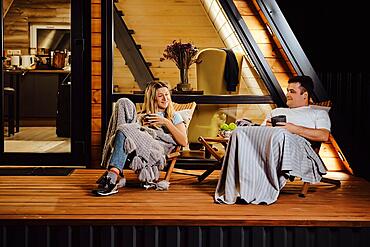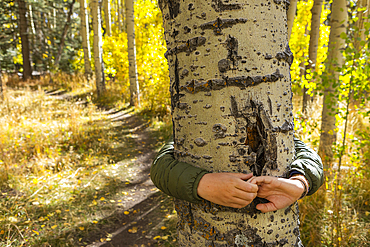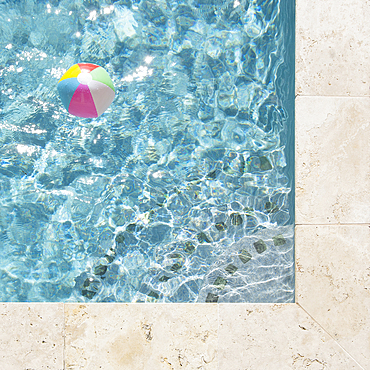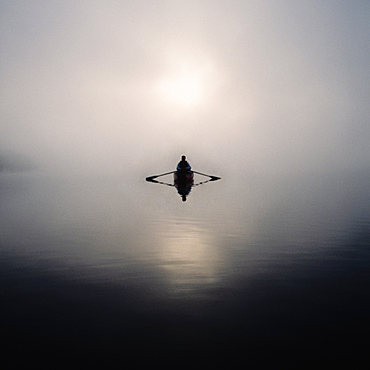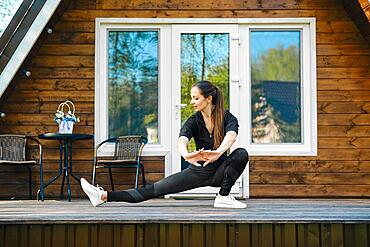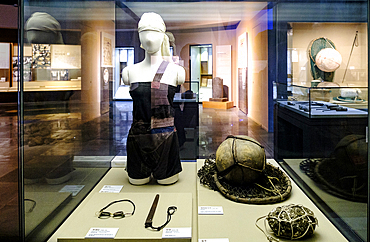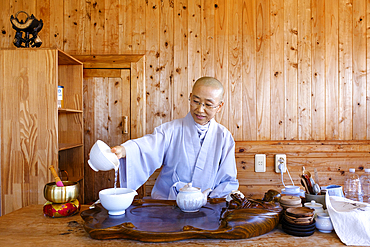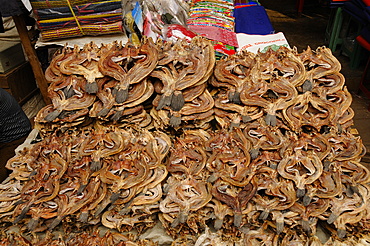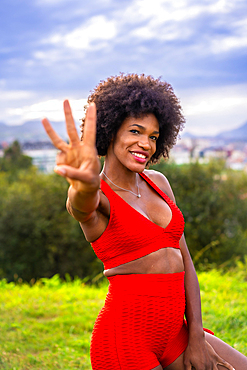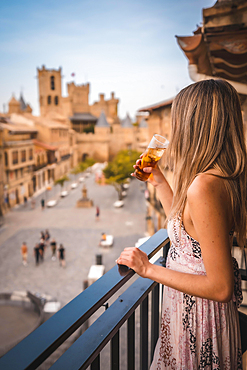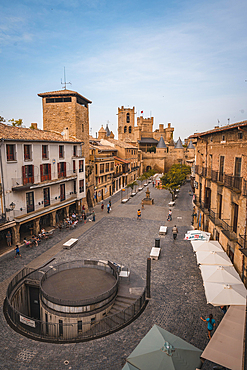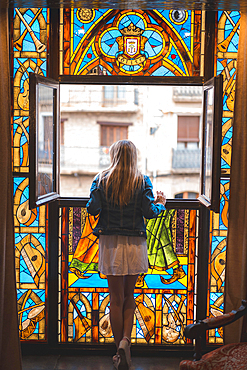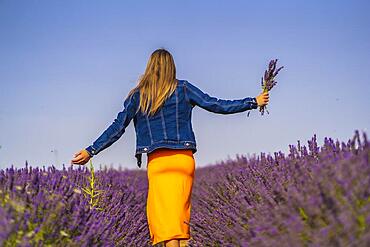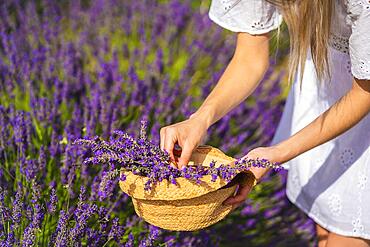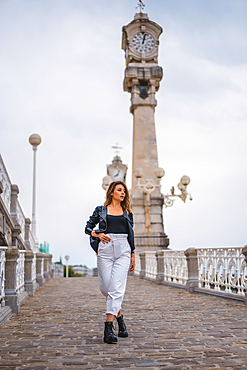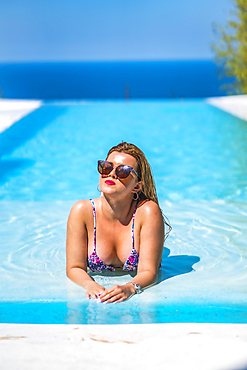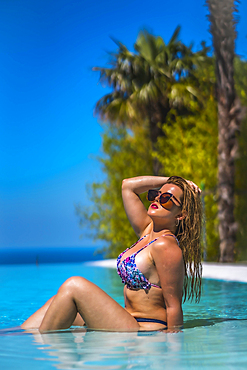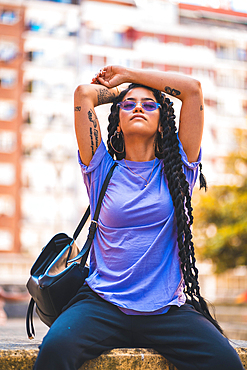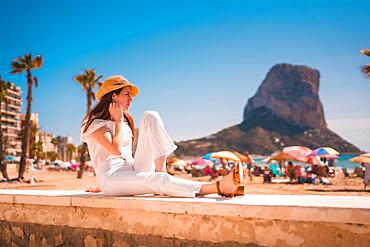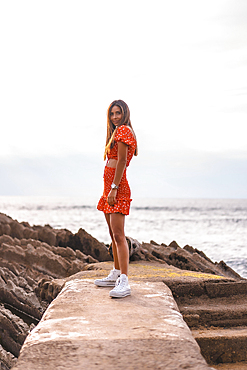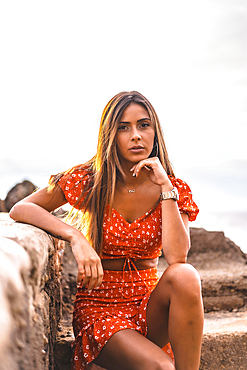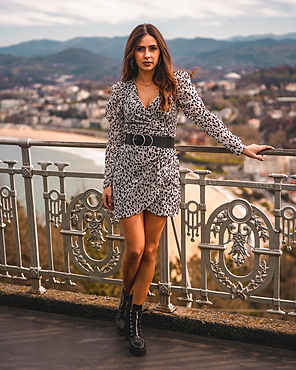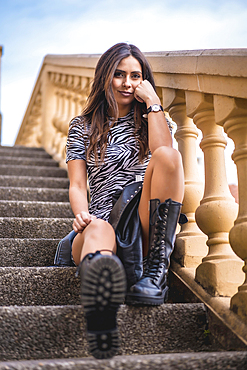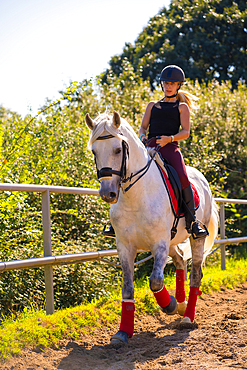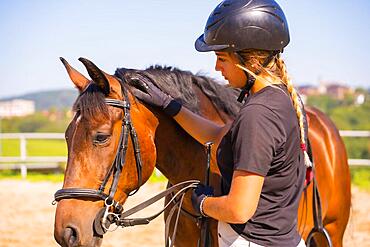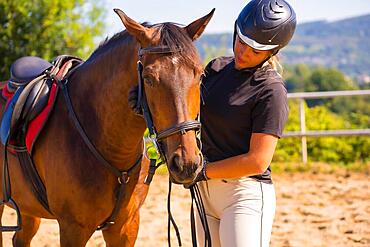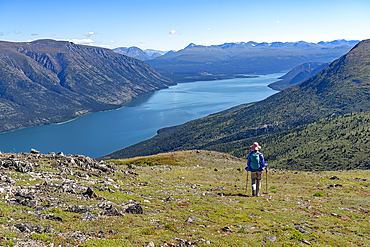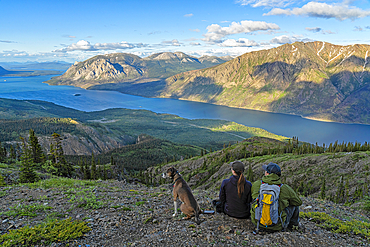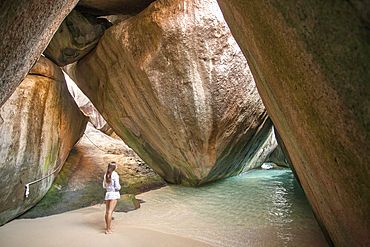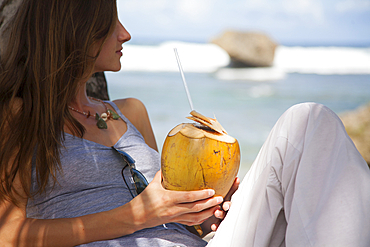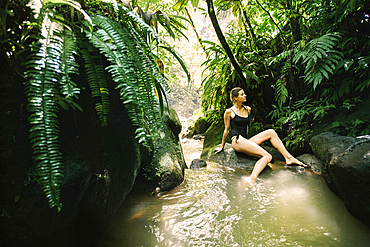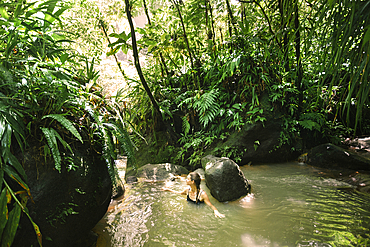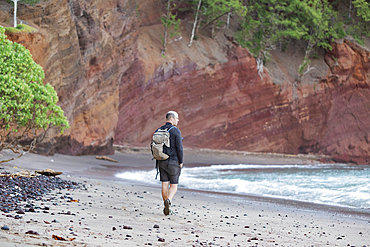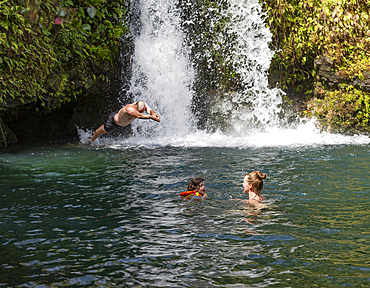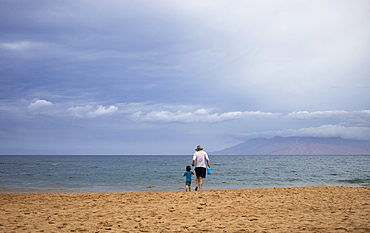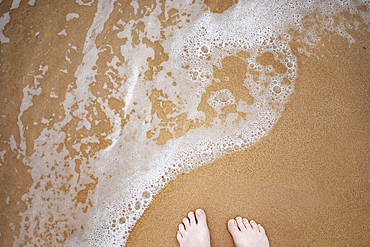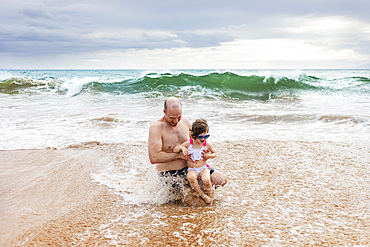Recent searches
Loading...
832-404559 - Barefooted smiling woman sitting on a sofa while reading a message on her smartphone
832-404558 - Smiling woman is sitting on a sofa while she turns off her smartphone
832-404557 - Close-up of a beautiful woman sitting on a sofa while writing a message on her smartphone
832-404555 - Close-up of beautiful woman showing something on smart phone to her friend sitting by
832-404496 - Friendly couple sitting on the terrace in the evening and talking
832-404498 - Woman cuts peeled banana on cutting board in the kitchen
832-404499 - A woman mixing fruits and berries in a blender for smoothie
832-404497 - Professional nutritionist filming on her smartphone tutorial about healthy eating on her kitchen
1178-44393 - USA, New Mexico, Hands of boy hugging aspen tree in Santa Fe National Forest
1178-44378 - Woman in swimming pool, US Virgin Islands, USA
1178-44376 - Man rowing boat in morning mist, Lake Placid, NY, USA
1178-44369 - USA, United States Virgin Islands, St. John, Cinnamon Bay, Pair of yellow flip flops on sandy beach
832-404441 - Digital nomad with laptop on veranda of tiny log house
832-404440 - Sporty woman does breathing exercise on lawn of her country house
832-404439 - Attractive fit sporty woman doing workout on the terrace of bungalow on sunny day
832-404438 - Active adult woman stretching her arms and legs on terrace of her log cabin
832-404437 - Sporty woman in sport clothing does stretching exercise on the terrace of her wooden cabin
1111-263 - Jeju's Haenyeo museum showcases clothes and items used when Jeju women first took to the ocean to source seafood for their families. Video footage in the museum shows their often tumultuous lifestyle.
1111-257 - Tea ceremony at Yakcheonsa Temple. It measures 30 meters high and spans 3,305 square meters; with many halls and praying rooms, it is the largest temple in Asia. Visitors can choose to have a temple stay to learn the Buddhist lifestyle on Jeju Island.
1235-1095 - Dried fish on a market stall, Mandalay, Myanmar
832-404396 - Fitness with a young black girl with afro hair, doing stretching, exercising in the field, red sport suit, fit girl, healthy life, copy paste space
832-404397 - Fitness with a young black girl with afro hair, doing exercise number three, exercise in the field, gray sport suit, fit girl, healthy life, copy paste space
832-404394 - Fitness with a young black girl with afro hair, doing jumps and squats, exercising in the field, red sport suit, fit girl, healthy life, copy paste space
832-404395 - Fitness with a young black girl with afro hair, doing stretching, exercising in the field, red sport suit, fit girl, healthy life, copy paste space
832-404393 - Fitness with a young black girl with afro hair, showing muscle, exercising in the field, red sport suit, fit girl, healthy life, copy paste space
832-404392 - Caucasian blond girl and dark-skinned girl with afro hair doing stretching exercises in a park. Healthy life, fitness, fitness girls, gray and red sport outfits
832-404391 - Caucasian blonde girl and dark-skinned girl with afro hair doing squat exercises in a park with the city in the background. Healthy life, fitness, fitness girls, gray and red sport outfits
832-404390 - Caucasian blonde girl and dark-skinned girl with afro hair doing squat exercises in a park with the city in the background. Healthy life, fitness, fitness girls, gray and red sport outfits
832-404384 - Lifestyle, young brunette with a wool cap and a red sweater with her eyes closed listening to music from her cell phone with her black headphones. Background of a brick wall
832-404385 - Lifestyle, two friends who have just arrived at the hotel with suitcases taking a selfie with the mobile, a Caucasian blonde girl and a black girl with afro hair, a pink dress and a red dress
832-404383 - Lifestyle. Young caucasian brunette in a red shirt sitting on a bench in the park with a take away coffee. Talking on the phone and working with the computer
832-404381 - Lifestyle, brunette Caucasian girl enjoying music with headphones in a park. Young girl in red t-shirt and jeans, copy space and paste
832-404382 - Lifestyle. Young Caucasian brunette in a red shirt sitting on a bench in the park reading a book. Vertical photo
832-404380 - Lifestyle, brunette Caucasian sending a message with her mobile phone in the city. Relaxing with a take away coffee next to a beautiful church in the park. Black sweater and with a wool hat
832-404361 - Young blonde caucasian woman in a long pink dress enjoying a beautiful rural hotel in Olite in Navarra. Spain, rural lifestyle. With a soft drink on the terrace and a castle in the background
832-404360 - Beautiful rural hotel in Olite in Navarra
832-404359 - Young blonde caucasian woman in a white dress and denim jacket enjoying a beautiful medieval hotel in the town of Olite in Navarra. Spain, rural lifestyle. Sitting on a rural sofa
832-404358 - Rural lifestyle, young blonde caucasian woman in denim jacket and orange dress, in a beautiful lavender field with her purple flower in Olite. Navarra, Spain. Walking with flowers
832-404357 - Rural lifestyle, Caucasian young blonde woman in white dress and sunglasses in a lavender field with her purple flower in Olite. Navarra, Spain. Picking flowers in the hat
832-404355 - Young Caucasian mother playing with her in the room with toys. Baby less than a year learning the first lessons of her mother. Mother playing with her son and hugging him lovingly
832-404356 - Lifestyle in the city with a blonde girl in white pants and a leather jacket. Perched on a hill with clocks in the background near the beach
832-404354 - Young Caucasian mother playing with her in the room with toys. Baby less than a year learning the first lessons of her mother. Boy playing on the floor with toys
832-404352 - Summer lifestyle in an infinity pool with a young blonde Caucasian woman in a pink and purple bikini with sunglasses. Lying in the pool water with the ocean in the background
832-404353 - Young Caucasian mother playing with her in the room with toys. Baby less than a year learning the first lessons of her mother. Painting with color paints
832-404351 - Summer lifestyle in an infinity pool with a young blonde Caucasian woman in a pink and purple bikini with sunglasses. Sunbathing in the pool water with the ocean and sky in the background
832-404349 - Summer lifestyle in an infinity pool with a young blonde Caucasian woman in a pink and purple bikini with sunglasses. Lying in the sun at the water's edge
832-404350 - Summer lifestyle in an infinity pool with a young blonde Caucasian woman in a pink and purple bikini with sunglasses. Sunbathing coming out of the pool
832-404346 - Lifestyle, young dark-skinned woman with long braids and purple glasses sitting on a bench in the park, with buildings in the background
832-404339 - Lifestyle of a young red-haired Caucasian girl dressed in white and with a straw hat on the beaches of Calpe, Valencia. Spain
832-404338 - Lifestyle of a young pretty red-haired Caucasian woman sitting in a blue dress by the sea, in a stone window
832-404325 - A young brunette Caucasian woman in a red dress on the beach of Itzurrun in the town of Zumaia, Gipuzkoa. Basque Country. Lifestyle session, enjoying the sea on stairs smiling
832-404326 - A young brunette Caucasian woman in a red dress on the beach of Itzurrun in the town of Zumaia, Gipuzkoa. Basque Country. Lifestyle session, enjoying the sea by stairs
832-404322 - Lifestyle, a young brunette caucasian woman with a tight black top sitting on the city river at sunset
832-404321 - Posing of a beautiful brunette girl in a building with colored windows, summer lifestyle
832-404320 - A beautiful brunette girl on a background of wooden boards, lifestyle, summer, vertical photo with seductive look
832-404319 - Street style, a young brunette at the Igeldo viewpoint in San Sebastian
832-404318 - Lifestyle, look of a pretty brunette sitting on stairs with black boots and a black and white dress
832-404210 - Detail of pregnant woman eating an apple after yoga exercise at home. Online exercises in prepartum classes
832-404209 - Young pregnant caucasian woman doing pilates exercise at home in the room. Online exercises in prepartum classes
832-404208 - A young pregnant Caucasian woman doing pilates exercise at home in the living room. Online exercises in prepartum classes
832-404207 - Detail of a young pregnant caucasian woman in gray t-shirt performing pilates exercise on the mat. Online exercises in prepartum classes
832-404206 - Detail of a young pregnant caucasian woman with gray t-shirt performing pilates exercise. Online exercises in prepartum classes, wellness during pregnancy
832-404205 - Young caucasian pregnant woman in gray t-shirt performing pilates back exercise. Online exercises in prepartum classes, wellness during pregnancy
832-404183 - A closeup shot of two young Caucasian hugging females with LGBT pride flag outdoors
832-404182 - A closeup shot of two young Caucasian females holding LGBT pride flag outdoors
832-404181 - A closeup shot of two young Caucasian females holding LGBT pride flag outdoors
832-404180 - A closeup shot of two young Caucasian females holding hands with LGBT pride bracelets outdoors
832-404177 - A Caucasian blonde girl riding on a white horse, dressed in black rider with safety hat
832-404175 - Posing of a Caucasian blonde girl on a horse caressing and pampering a brown horse, dressed in black rider with safety cap
832-404174 - Posing of a Caucasian blonde girl on a horse caressing and pampering a brown horse, dressed in black rider with safety cap
832-404173 - Alternative girl with white braids using a computer in a shopping mall, smiling making a call
832-404171 - Alternative girl with white braids with a computer in a shopping center, making a video call with a hot coffee in her hands
832-404172 - Alternative unrecognizable person with a hot coffee surfing the internet on the computer and sending a text message
832-404170 - Alternative girl with white braids with a computer in a shopping center, looking at the camera with a hot coffee in her hands
1116-52962 - Outdoor portrait of a husband and wife in a city park during a warm fall afternoon, Leduc, Alberta, Canada
1116-52927 - View taken from behind of a person walking down a mountainside with a spectacular view of the Kusawa Lake below, Yukon, Canada
1116-52876 - View taken from behind of two women standing on a mountain top with arms around shoulders, enjoying the view, while exploring and photographing the amazing scenery of the Yukon up along the Sam McGee Trail near Carcross, Yukon, Carcross, Yukon Territory, Canada
1116-52875 - View taken from behind of two women sitting on a mountain top with their dog enjoying the view, while exploring and photographing the amazing scenery of the Yukon along the Sam McGee Trail near Carcross, Yukon, Carcross, Yukon Territory, Canada
1116-52832 - Woman standing under the large, boulders on the seaside shores of The Baths, a famous beach in the BVI's, Virgin Gorda, British Virgin Islands, Caribbean
1116-52828 - Close-up of a woman sitting on the beach looking out at the ocean holding a coconut with a straw, Bathsheba, Barbados, Caribbean
1116-52824 - Young woman walking past an historical deep ocean, research submarine on display on the waterfront at George Town, Grand Cayman, Cayman Islands, Caribbean
1116-52819 - Woman relaxing on the rocks surrounding the hot springs at Trafalgar Falls enjoying the atmosphere of the lush rainforest on the Caribbean Island of Dominica in Morne Trois Pitons National Park, Dominica, Caribbean
1116-52818 - Woman enjoying soaking in the warm water, hot springs at Trafalgar Falls in the lush rainforest on the Caribbean Island of Dominica in Morne Trois Pitons National Park, Dominica, Caribbean
1116-52817 - Overhead view of a woman climbing over the slippery, wet rocks along the rushing stream at Trafalgar Falls on the Caribbean Island of Dominica in Morne Trois Pitons National Park, Dominica, Caribbean
1116-52811 - View from behind of a man walking along the beach among the rocky sea cliffs looking out at the Pacific Ocean on the Road to Hana, Maui, Hawaii, United States of America
1116-52810 - Family enjoying swimming in a natural pool under a plunging waterfall along the Road to Hana, Maui, Hawaii, United States of America
1116-52809 - Portrait of a family standing on the shore and smiling at the camera along the sandy beach at Kapalua Resort in West Maui, Maui, Hawaii, United States of America
1116-52808 - Close-up portrait of young girl wearing swimming goggles warpped in a beach towel and sitting by her mother on the beach, Maui, Hawaii, United States of America
1116-52807 - Scenic view, taken from behind, of a grandmother and granddaughter walking along the shore at Maluaka Beach with the Pacific Ocean and cloud covered mountains in the distance, Maui, Hawaii, United States of America
1116-52805 - Family on a mountain top above the clouds at Haleakala watching the sunrise over the Pacific Coast, Haleakala National Park, Maui, Hawaii, United States of America
1116-52806 - Viewpoint, looking down at feet standing next to foamy surf on Kamaole Beach at the water's edge, Kihei, Maui, Hawaii, United States of America
1116-52804 - Father and daughter sitting in the water on the shoreline playing in the foamy surf along Kamaole Beach, Maui, Hawaii, United States of America
1116-52755 - View taken from behind of a woman in a straw hat standing on the top of a mountain cliff looking out onto the brilliant, blue water of the Pacific Ocean along the Kalalau Trail on the Napali Coast, Kauai, Hawaii, United States of America
1116-52754 - View taken from behind of a woman in a straw hat sitting on the top of a mountain cliff looking out onto the brilliant, blue water of the Pacific Ocean and mountainous coastline along the Kalalau Trail on the Napali Coast, Kauai, Hawaii, United States of America
1116-52691 - Two wedding rings rest on the Bible at a wedding





